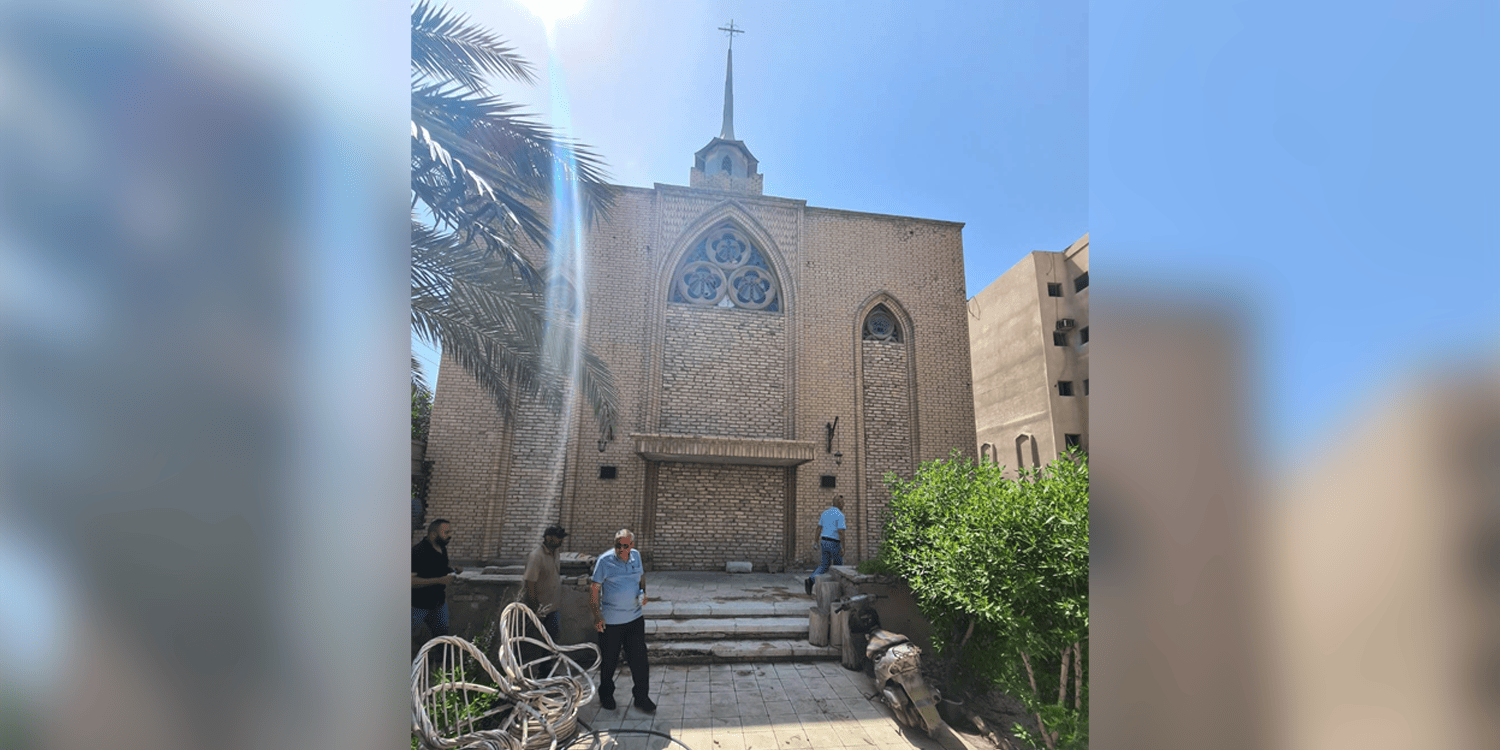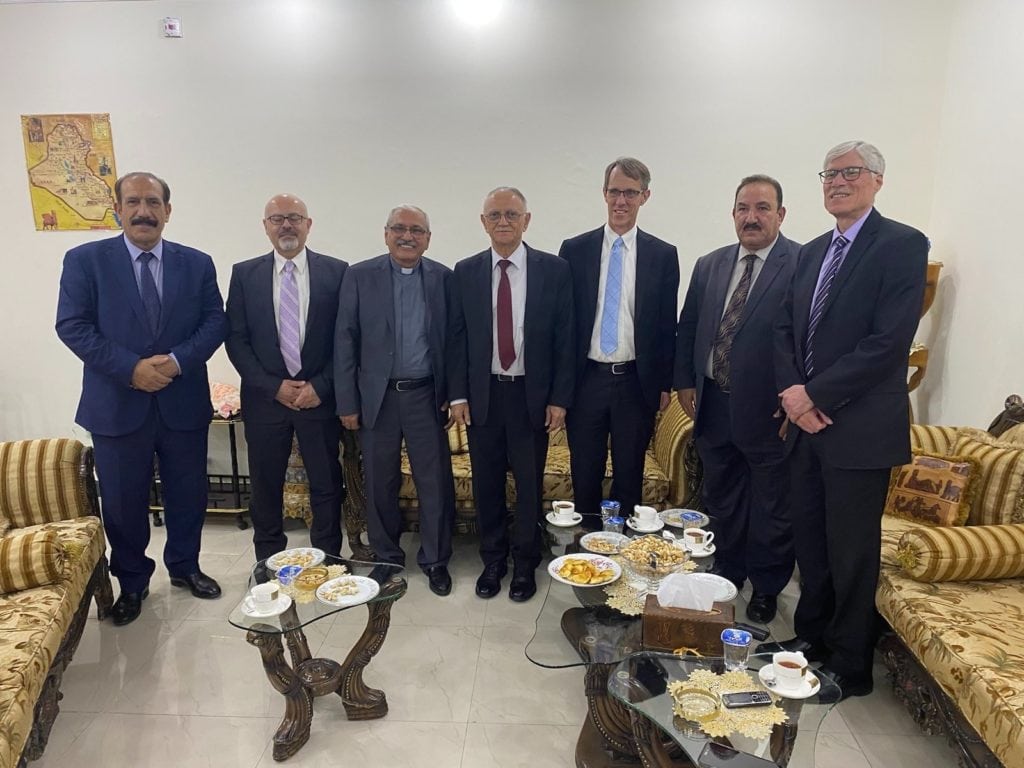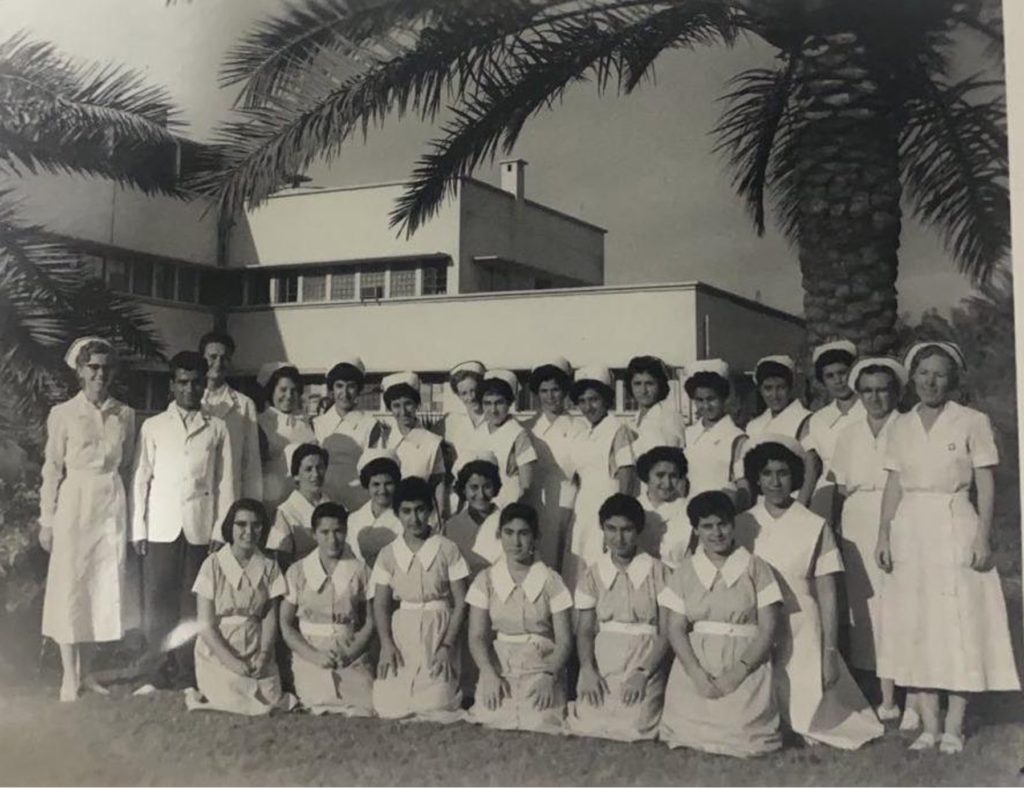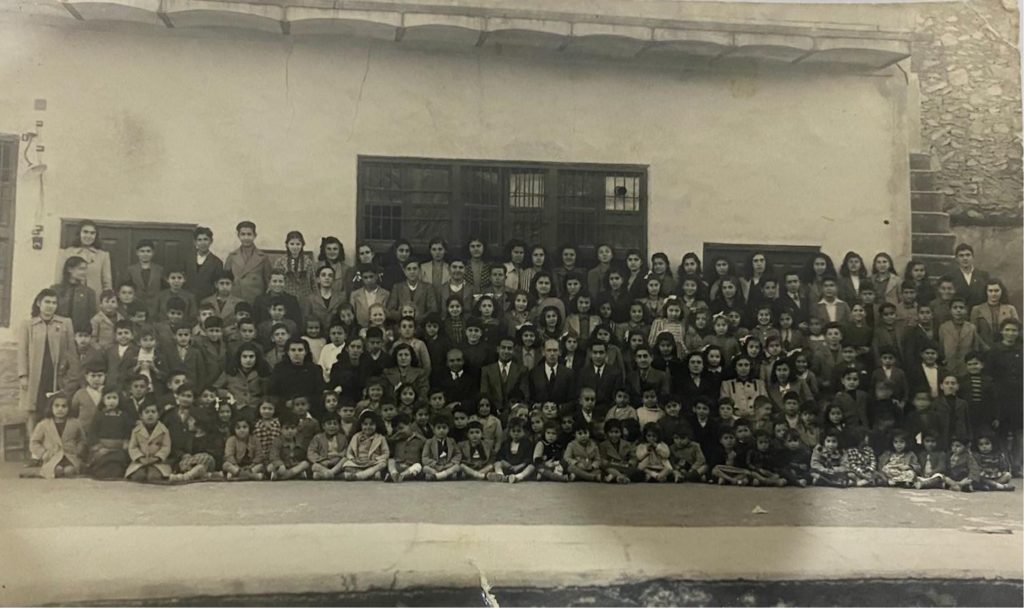
The downtown traffic likely didn’t even notice the small gathering of visitors, their phones in hand, silently gazing at the bricked-up gable window above the entrance of the old church. But for many Iraqi Seventh-day Adventists the scene is riveting, deeply meaningful.
The visitors were Adventist church leaders from the Middle East and North Africa Union (MENA) based in Beirut, Lebanon. They were led by George Yousif, legal association president of the Adventist Church in Iraq, and the special guests of Yonadem Kanna, a Christian who has served for 26 years in the Iraqi Parliament and is currently secretary-general of the Assyrian Democrat Movement. The church captivating their interest was the Basrah Adventist church, built in 1965 but closed for decades. It is currently being partially refurbished by USAid and Durr Al Iraq Association as a cultural attraction in downtown Basrah.
The group was on a week-long visit that provided Adventist church leaders invaluable exposure to the rich history and current presence of Christianity in Iraq. “With this visit, we were privileged to introduce our Adventist leaders to the leaders of other Christian organizations in our country,” Youssif said. “We are honored to be one of the 14 Christian groups recognized in Iraq, and we value the opportunity to help other Christian leaders understand us better and to explain to them who we are as fellow Christians.”
Raafat Kolta, finance director of the East Mediterranean Region (EMR) of the Adventist Church, noticed the openness of fellow Christians. “I was impressed by the warm, gripping welcome the Christian leaders gave us. All of us together are a very small minority. I felt their support and a longing for us to join them in growing and strengthening our congregations.”
The group was also able to visit Adventist church and school properties in Baghdad, Mosul, Kirkuk, and Irbil. EMR director Darron Boyd shared his own reaction. “For those of us who had only heard of these cities in news reports, our visit gave me a new picture of this beautiful country and the extraordinary impact our Adventist institutions have had in the past. It was impressive. I’ve prayed for an opportunity to visit so many times, and it was more moving than I expected. Just imagine the stories behind each school, church building, hospital room of what God once did here.”
Part of that story is told poignantly at the entrance of the Basrah Adventist church, where the group stood inspecting the soft-brown bricks that blocked the entrance and filled the twelve church windows — all except the peak of each one.
MENA executive secretary Myron Iseminger was moved. “From the little bit of stained glass that we could see of each bricked-up window, I tried to picture the beauty of the full window behind those bricks,” he said. “They say they’re coming down in the renovation; very soon light will shine through! I was struck with the thought — what God has done in this country isn’t visible right now because our churches are dark and empty. But someday soon, His light will shine once again! The investment of the past has not all been lost.”
From 1946 to 1959 the Dar Al Salam hospital was a nationally famous Adventist medical facility in Baghdad. Dar Al Salam subsequently became the identity also of four large, highly respected Adventist schools that functioned into the late 1970s in Baghdad, Mosul, Basrah, and Kirkuk, all supported by a national membership of nearly 200 Iraqi members.




The Basrah church was built during some of the strongest years of the Iraqi Adventist Church, a striking sanctuary highlighted by exquisite stained-glass windows, each reflecting the beauty and thought that went into all the Adventist churches in Iraq. When the church’s twelve windows were shattered in 1990 during the first Gulf War, Johnny Manassian, a pastor in Iraq and a stained glass artist, offered to re-do them. The massive undertaking began with the help of several Middle East College students who joined him for six months to cut and stain glass, pour lead, and refashion the artwork, though it took years more to complete the whole project.
Eileen Ghali, Manassian’s daughter, remembers the story of the Basrah church windows: “My father understood what the windows represented. He put his whole self into restoring what he could for the future.” As more crises threatened the region, though, the church leaders in Iraq decided to brick each window to protect their unusual beauty and to hold out hope that future generations would be able to worship once again.
The travel freedom now possible represents a meaningful step toward that future as the country opens to both tourists and international professionals. Boyd acknowledged the opportunities: “I saw an unbelievable amount of development and construction everywhere we went. With so much growth and opportunity in the country, I was struck most by the prospect of Adventist medical personnel, engineers, educators, businessmen, and other professionals coming and investing once again in this country, serving the Iraqi people by their professions and by the simple influence of their lives.”
“The sanctuaries that have been silent for years can once again experience worship,” MENA president Rick McEdward said. “Due to war, our churches have sat empty for many years. This is heartbreaking for our Iraqi members around the world to see. Our dream is to reopen them again. We see the possibility. We are praying for people to take an interest in these historic communities, to come and invest their professions and interest in the region. We also need God’s help in providing pastors and workers for these churches so that God’s light can fill them once again.”